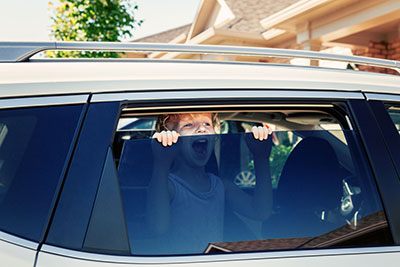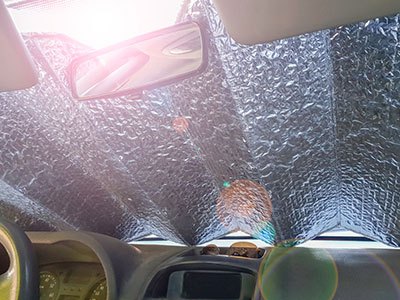Though various studies show reduced occurrence, hot car deaths are still present. The good news is that fatalities are preventable. Parents and caregivers play a crucial role in eliminating hot car death in children.
The main question is: What tips prevent child hot car deaths?
We offer you a solution, multiple guidelines, and different factors to consider when leaving children in vehicles and how to increase their safety in motor vehicles.
More...
Take away key points:
Table of Contents
- All You Must Know About the Hot Car Death
- What is a hot car death?
- What causes vehicular heat stroke?
- Hot car death symptoms
- Hot car safety statistics
- How warm can vehicles get?
- What are the risk factors for car heatstroke?
- How to prevent hot car deaths?
- Common dangerous misconceptions
- The consequences of children's vehicular deaths
- Hot car safety laws
- Can technology prevent vehicular deaths?
- FAQs
- Final Words
All You Must Know About the Hot Car Death
Raising awareness of the hot car death and guidelines to prevent child fatalities is critical. Let's look at crucial factors to consider to increase car safety.
What is a hot car death?

A hot car death refers to Pediatric Vehicular Heatstroke - PVS. The condition means the involuntary casualty of a child younger than eighteen perishing due to severe heat or heat stroke within a contained and enclosed motor vehicle.
The car's interior - leather-wrapped steering wheel or dark upholstery attracts and preserves the heat, causing the temperature inside the motor vehicle to rise. Temperatures become hotter as there is no fresh air to cool the interior. Finally, temperatures grow to extreme levels, proving fatal to passengers inside.
Children and pets are most prone to death, as they cannot safely overcome these dangerous situations. Their bodies warm three to five times faster than adults' bodies, so kids are the most susceptible to hot car strokes in the back seat, as the AAP states.
What causes vehicular heat stroke?
Here are some of the most common causes of child hot car deaths, according to the Department of Meteorology and Climate Science at San Jose State University:
Rank | Main cause | Percentage of PVS | Number of child fatalities |
|---|---|---|---|
#1 | Forgotten by caregivers & left unattended in the back seat of the hot vehicle | 52.59% | 477 |
#2 | Gained access to the car doors independently | 25.80% | 234 |
#3 | Knowingly left by caregivers | 20.07% | 182 |
#4 | Unknown | 1.54% | 14 |
Many parents/caregivers still don't realize the severity of the issue, despite the numbers. For instance, a boy died in 2020 due to heatstroke, although the temperature was 78 F-degree outside. Even in earlier years, before 2020, many kids were found unresponsive in vehicles, regardless of the outdoor temperature.
Hot car death symptoms

A hot car death doesn't occur at once. Multiple warning signs indicate that something's wrong with your child so that you can take immediate action. The most prominent symptoms of vehicular heatstroke are:
You can find more symptoms here. If you notice any signs in your child left alone in a hot vehicle, please immediately seek medical help to prevent hot car deaths instantly.
Hot car safety statistics
Let's look at the statistics for a better understanding of the issue.
In addition, there were 28 vehicular heatstroke deaths in 2022, and most happened during the summer months, as parents/caregivers left the child unattended in hot cars.
How warm can vehicles get?
On average, it takes only 25 minutes for the temperature to reach 100°F inside the vehicle if the outdoor temperature is 73°F. Another study shows that heat increases within the first fifteen to thirty minutes of a vehicle being unattended in a parking lot and off. The study confirms it doesn't take too long to heat at dangerous temperatures.
What are the risk factors for car heatstroke?
Specific risk factors are commonly associated with pediatric vehicular heatstroke, although each case differs. The risks include:
Based on all the studies and death cases, parents question if and how they can prevent vehicle deaths in children and increase car safety. This leads us to the next part of the article.
How to prevent hot car deaths?
As a parent or a caregiver, you have a crucial task to protect a child from pediatric vehicular heatstroke. Here are the safety tips to keep a watchful eye on your child by the National Highway Traffic Safety Administration:

Common dangerous misconceptions
Various misconceptions contribute to vehicular deaths as they're believed to prevent them. However, the misleading conceptions not only jeopardize your child's safety, but are also ineffective, aggravate the situation, or exacerbate the issue. Some of the misconceptions include:
The consequences of children's vehicular deaths
Parents won't stop feeling the loss after the death of their children. However, legal actions might take too much time, the officials might take different steps, and the results may differ.
A recent study shows that 500 cases in which parents or caregivers accidentally leave their children alone in cars have dramatic outcomes across many states in the USA. So, the results have shown that:
- 43% - no charges were fined
- 32% - of caregivers were charged and convicted
- 11% - charges resulted in no convictions
- 14% - of cases were still pending or unknown.
In addition, further in the study, Amber Rollins explains that the cases might be treated differently due to proof, medical documents, and scientific studies to determine the responsible adult. So, can parents rely on the law, and to what extent? Read below.

Hot car safety laws
The Infrastructure Bill in 2021 included legislation regarding the children in vehicular deaths. As a part of the Child Safety Section of the bill, the legislation required new vehicles with child alert technology that reminds adults that children are still inside the cars. The legislature might vary from one state to another, showing parents or caregivers still need to learn more to keep children safe in cars.
Many states introduced the Good Samaritan Laws to save lives and protect forgotten children. We've listed some of the states with the specific laws, so refer to the table below:
State | Hot car safety law |
|---|---|
Alabama | |
California | |
Connecticut | |
Florida | |
Hawaii | |
Illinois | |
Louisiana | |
Maryland | |
Missouri | |
Nevada | |
Oklahoma | |
Pennsylvania | |
Tennessee | |
Texas | |
Washington |
Can technology prevent vehicular deaths?
Nowadays, multiple car manufacturers are creating different systems to increase child safety in cars and reduce the number of fatalities. The manufacturers are helping parents and improving the advanced technologies to save children's lives. Here are some of the best examples:
FAQs
What happens if a baby is left in a hot car?
If a baby is left in a hot car, it might die due to heatstroke, especially during the summer.
How quickly can a baby overheat in a car?
A baby can overheat in a car in the first fifteen to thirty minutes.
How hot can a car get in the sun?
Car temperature reaches 138°F when it's 90°F outside, which is hotter than any other temperature on earth.
Can I leave the baby in the car for 5 minutes?
No, you mustn't leave your baby in the car even for one minute, let alone five. They could die due to high temperatures and heatstroke.
What to do if you see a baby left in a car?
If you happen to see a baby left in the car, please do the following:
Final Words
Hot car deaths are real, and you shouldn't neglect your children's safety while in cars. Therefore, please follow the rules and never leave your little ones unattained, even for a minute, since a stroke can jeopardize their life.
